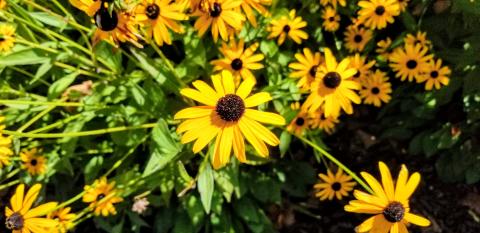Alexander 4-H Club issued the following announcement on Apr. 26.
Those who love gardening, wildflowers, or who are tired of mowing expansive lawns should consider creating a native plant garden.
Gemini Bhalsod, a horticulture educator with University of Illinois Extension, says many native gardens can be incorporated into any existing landscape, even if space is limited. The idea is to include plants, trees, and shrubs that already call Illinois home.
“Many native plants are not only beautiful, but they also support pollinators and have environmental benefits,” says Bhalsod. “There are many low-maintenance options that will look great in your landscape.”
Planning and design are important steps toward a successful outcome. Pay close attention to the sun and soil.
“We usually think about installing, planting, and enjoying our gardens,” says Bhalsod. “But I encourage you to spend this time in early spring planning your native gardens. By making note of its conditions, you can choose plants that are most likely to thrive.”
Decide where you want to plant your new garden bed and take careful note of whether the location receives full sun, partial sun, or shade. Determine the condition of the soil. Is it usually soggy, with poor drainage? Problems with soil will need to be addressed.
Gardeners wanting the greatest success must also be sure to kill off any existing vegetation, such as turf and weeds.
“My favorite eco-friendly way to kill existing vegetation is to use weighed down tarp, or layers of wet cardboard and newspaper,” says Bhalsod. “You can just remove the tarp and plant directly in the soil after a few months, or you can put fresh soil and mulch on the cardboard and plant immediately. The materials will eventually break down.”
When selecting plants and designing, select Illinois native species from your region. Select plants that are locally grown when possible. For the greatest wildlife benefit, seek out straight species, not cultivars. Choose plants with four-season interest, and aim for continuous blooms throughout the spring, summer, and fall.
Determine the size of the plant you need to purchase: seeds, plugs, quarts, or gallons. The more the roots are developed, the easier the plant is to establish.
Layer various plants, such as trees, shrubs, grasses, and ground covers for more dimension. Keep low-growing plants in front of windows to maintain a nice view.
To learn more, watch Illinois Extension’s Good Growing webcast about native plants at go.illinois.edu/HortVideoNatives.
Original source can be found here.

Source: Alexander 4-H Club



 Alerts Sign-up
Alerts Sign-up